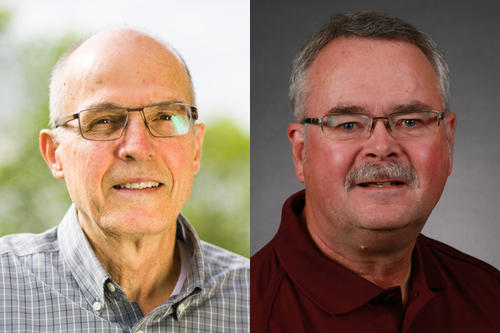
Winter driving presents unique challenges for drivers and the municipalities maintaining local roads. University of Minnesota experts John Gulliver and Gary Wyatt are available for comment on the development of innovative approaches to keep roads clear during the winter months.
John Gulliver
“Salt use in Minnesota has increased by a factor of ten over 50 years as we shifted from friction enhancements with sand to ice removal with road salt. The benefits of using salt are higher travel speeds and safety, but the cost has been to the quality of our streams, lakes and groundwater.
“Most of the salt placed upon our roads, parking lots and driveways ends up in meltwater runoff. A University of Minnesota study found that 78 percent of the salt placed on roads stays in the Minneapolis-St. Paul area, entering lakes or flowing into our soils and eventually the groundwater. The chloride in this salt will make the water taste salty and ruin the habitat for freshwater aquatic species, such as fish and clams.
“There are currently 47 impairments for chloride in Minnesota waters, mostly in metropolitan areas where roads are concentrated, which means that these water bodies will not support a vibrant population of fish and other aquatic species. Drivers and their communities need to reduce their road salt habit and move to alternatives that are being researched at the University of Minnesota to bring back healthy aquatic habitats.”
John Gulliver, PhD, MS, is a professor in the College of Science & Engineering and a scholar with the Center for Transportation Studies. His scholarly focus is on mass transport in environmental systems and stormwater pollution prevention. Gulliver conducts his research at the St. Anthony Falls Laboratory. He is currently researching the development of technology to treat stormwater runoff; assessing stormwater infiltration practices; predicting runoff from small, urban watersheds; and remediation of internal phosphorus loading in lakes.
Contact
John Gulliver
[email protected]
(612) 625-4080 (o)
Gary Wyatt
“Blowing and drifting snow on roadways reduces driver safety, degrades road quality and increases snow removal costs. Snow fences act as windbreaks, causing blowing snow to deposit on the landscape rather than roads.
“The University of Minnesota has been collaborating with the Minnesota Department of Transportation in developing snow control tools and outreach methods to encourage landowners to consider snow fences on their land. Snow fences help protect state highways from blowing and drifting snow.
"MnDOT has identified 3,700 snow problem sites along state highways which cause poor driving conditions in the winter. Use of living snow fences placed in farm fields helps capture the wind driven snow preventing snow drift formation on the highway. Keeping the windblown snow off the highway is more efficient than the continual plowing and salting the roadway after a blowing snow event.
"The blowing snow control website has tools and resources that can assist local and state agencies in keeping roads clear of blowing and drifting snow and ice.”
To learn more about snow controls, visit snowcontroltools.umn.edu. Landowners and farmers can learn more about the MnDOT snow fence payment program by visiting z.umn.edu/mndotlsf.
Gary Wyatt is an Extension educator with a focus on agroforestry and bio-energy at the Mankato Regional Office and a scholar with the Center for Transportation Studies. He works with federal and state agency partners, such as MnDOT, in promoting conservation and agroforestry practices in rural landscapes. Wyatt’s scholarly focus includes invasive species, tree selection, living snow fences, non-timber forest products, riparian buffers, windbreaks and ecosystem services.
Contact
Gary Wyatt
[email protected]
(507) 389-6748 (o)
###
About University of Minnesota experts
University of Minnesota experts can provide commentary, insights and opinions on various news topics. See selected experts on UMN’s Experts Guide or inquire about additional experts via email at [email protected].
Media note:
The University of Minnesota Twin Cities is equipped with a VideoLink ReadyCam® studio for live or taped HD television interviews with our experts. To arrange an interview, contact the University News Service at (612) 624-5551 or [email protected].
- Categories:
- Science and Technology





